Presented at the "First International Conference" of CRN Child Science Exchange Program in Asia held in Shanghai, China, March 4-5, 2017.
Moderator: Lili Ma (President of Hua Xia Future Early Childhood Education Group)
Presenters: Shih-Tsung Chang (Professor of National Taipei University of Education), Yan Zhang (Professor of Beijing Normal University)
Children's Museum in a Kindergarten Classroom: Development of Learning Materials with Which Children Can Enjoy Learning Through Touching (Shih-Tsung Chang)
Today, I would like to introduce my research on children's learning through practical activities at a children's museum. I found it to be inseparably related to early childhood education. In order to offer a suitable environment for early childhood education, there are two important points. One is a physical environment supporting the growth of children and their need of learning, and the other is the support of teaching staff toward the growth of children and their quest for learning.
Preschool education is, in the first place, a special stage of learning. Children are by nature seekers and observers. However, adults tend to forget children's instinctive curiosity towards nature and put them in a classroom to study hard. I will tell you a story: a kindergarten teacher showed the children in his/her class three picture cards, saying that "This one is a chick, this one is a rooster, and this one is a hen. Has anybody heard them call?" However, nobody raised their hand. The teacher gently asked them, "Why don't you answer?" Children answered, "They are just cards. They do not make a sound." What I want to say is that, kindergartens should think about more child-centered education and employ a more unconventional, open-ended approach, while teachers are required to change their conventional mindset.
Over the years we have been conducting research on an integrated method of education and entertainment, that is, "Edu-tainment" and gradually came to realize that we could actively motivate children to learn through play. It is possible to improve the learning ability of children by designing systematic play areas, toys, and learning materials, and providing children with the experience of learning through play. Play is the ultimate form of exploration for children. There are three functional options when we teach children through play and voluntary behavior: teaching knowledge, enhancing abilities, and triggering motivation. Teachers are required to appropriately and in a timely manner determine and switch between these three functions in order to avoid disturbing the children's own natural judgement by excessive teaching. For early childhood education, there are official audio-visual learning materials as well as an unofficial approach to learn in the natural environment. If teachers place too much emphasis on teaching, this will reduce children's play time and eventually make them passive learners. Therefore, it is necessary to encourage children's voluntary actions and creativity through play, to let them freely explore and make decisions in learning, and to improve their ability to "learn from their mistakes." In this regard, we should shift from fixed curricula to flexible types, and utilize sensory-based learning materials rather than conventional audio-visual types.
I will tell you about the three forms of learning media. The first is teaching equipment which is systematic, well-organized and intentional, and is offered under teachers' instructions and controls. The second is toys. Toys are an "open-ended" media and children can freely play with toys and control them. The third is learning tools. If we carefully choose systematic learning tools and offer various play areas to be selected by children, we will be able to achieve educational control by teachers, and at the same time, motivate the children to learn voluntarily. This is what the "educational materials in play corners" is all about, being controlled by both teachers and children.
In general museums, we often see signs saying not to touch the objects on display. On the other hand, children's museums have signs saying, "Please touch." I once visited a children's museum in Washington where I saw the slogan, "Truth can be obtained through experiences of exploration and self-discovery." I was told that the phrase came from Confucius, but I am not sure if this is true. In Kindergarten, they focus on stimulating human senses through their eyes, ears and noses in children's learning, but often underestimate the experiences of eating as well as the senses of taste and touch. Is it feasible to provide education by making use of these features in our curriculum?
Here, I would like to propose the concept of "Flow of mind (Figure 1)." When young children have abilities that are not yet developed, they can comfortably take on easy tasks but feel uneasy when facing difficult tasks. Therefore, we should help children develop their abilities slowly and gradually through teaching. We cannot control their pace of development, unlike museums. We need to tailor our teaching methods to match the developmental level of each child. We have a slogan, "Lower the hurdle to achieve better outcome" which means we should adopt simpler procedures for difficult challenges and thus achieve learning outcomes more easily. For example, when teaching children how to make origami (the art of paper folding), we should explain them by showing each process of paper holding, rather than showing the finished state only. This method will allow children to learn slowly but successfully.
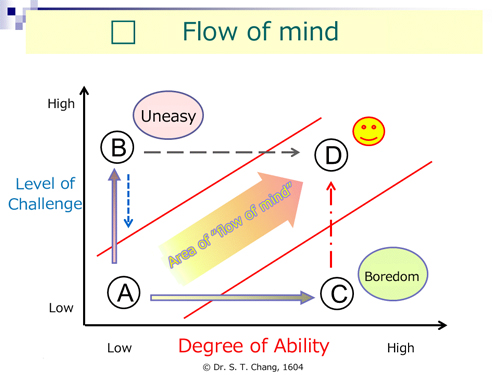
Figure 1: Chart of "flow of mind"
Should we teach children to write letters in a kindergarten classroom? Because Chinese characters are pictograms that inspire children to build the image of these characters, children may feel some characters are simple where adults think they are complicated, and vice versa. Therefore, I think, teaching children to write letters is not necessary. Then, do we need to support children in learning letters in a kindergarten classroom? I think we can provide support but we should consider whether we should teach children in a way focusing on the achievement level required by adults or focus on children's own pace and initiative. If our focus differs, the answer will differ as well. Similarly, do we need to teach children a broad range of science skills at an early stage? The answer is of course no. Do we need to provide children with various play opportunities? The answer is of course yes. The important thing is not to determine whether it is "necessary or not" but to determine "how to do it."
How do you see the "ornament of four people" in the photo (Figure 2)? Do you think the object is showing two people positioned on the upper side and the lower side, or two people sitting with their backs to each other? This is a matter of multi-view visual recognition. If you look at something from a different angle, you then look at it from a different point of view. Education is the practice of freedom and will differ depending on the angle at which we view the world.
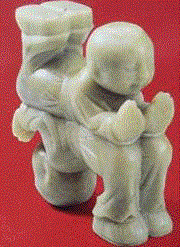
Figure 2: The ornament of four people
Teaching Tailored to Children's Nature (Yan Zhang)
Today, I would like to discuss "Tailoring learning to children's nature" and share with you the importance of recognizing children's specific position in teaching practices and letting children be as children.
First of all, I will explain about the "Sihuan Play Group." The group was established in 2004 as an unofficial preschool education organization, providing basic preschool education for the migrant children of peasant workers. The word "Sihuan" is the name of a community and a street. To have the name of a community or a street helps the members to have the sense of belonging to the same community. Over the past thirteen years, the Sihuan Play Group has implemented various unofficial education practices for migrant children. We think that, because preschool education is often provided unofficially for preschool children, the education style using a small and convenient form of community is ideal.
Kindergarten should be a paradise for children to play and explore. So what is like for them in the Sihuan Play Group? Adults should respect children's nature in a kindergarten classroom, recognizing that studying is not the main purpose. Education should be provided by completely understanding the personal nature of children's development. Obliging children adapt to education is like putting the cart before the horse. It has been 28 years since the United Nations Convention on the Rights of the Child was enacted. The convention explicitly states that all acts relating to children should be done primarily based on the best interests of children; however, there are still a great many educational practices which ignore children's nature.
Many children hate kindergarten because they do not enjoy the activities there. So we need to ask, why are they unable to enjoy kindergarten? Some of the main reasons are that they need to follow teachers' instructions or teaching materials whatever they do, that they cannot play freely under the control of adults, that they always need to line up and teachers are always lecturing, and so on. After starting the activities of the Sihuan Play Group, I noticed that we can have children enjoy learning by making small efforts with creativity. We do not need special techniques nor money and goods to make children happy. The most important thing is that teachers should "faithfully implement their education strategies." They need to go back to basics and try to understand the thoughts and emotions of children.
Education affects the life of individuals; therefore, we should consider the fundamental aspects of personality and life style. We gained valuable experiences over the past years through certain initiatives. Education is like agriculture, creating conditions to grow roots and leaves, and should never be like a factory production line focusing on scales and standardization. Therefore, we should carefully observe each child, taking time and creative efforts to protect the lives of children and develop their skills. Education is a repeating process of "practice - affirmation - re-practice - re-affirmation" to increase the recognition of something, and at the same time, a process of constantly learning and developing skills. Teachers should constantly improve their awareness through practices, evaluate their activities, and obtain necessary skills and solid professional beliefs through such activities. It is important to protect the right of children to play and develop, by focusing on the needs of children and giving the highest priority to their interest. We also need to value the life and personality of children based on the rules of nature, instead of simply relying on education manuals. Children are part of nature, and their developmental process is also part of the rules of nature. Therefore, we should follow and never contest such rules.
The life of children at the Sihuan Play Group starts from play. Children by nature enjoy play activities and learn through such activities, which lead a sound development of physical and emotional health (Figure 3). The play group provides children with sufficient time and space to play freely, and allows them to take an interest in various things through a wide range of activities. Its curriculum is also designed to motivate children to explore and learn. Teachers should dedicate efforts to education, always trying to understand the thoughts and emotions of children, even in trivial matters, while coming down to a child's level and acting as a "big friend" of children. Furthermore, it is important to play with them, by discovering natural learning resources, offering various creative opportunities, and inventing various play activities; in this way, children can play freely and fully. For example, teachers can offer the word-chain game using two sets of Olympic game logo cards, or the game of reading hieroglyphics or arranging cards in alphabetical order. There is also the "grabbing game" in which one or two children are asked to grab almonds or peanuts and count the number of these nuts. Parents can join children's activities and play the role of first teacher. Spending time with children is a process of participating in education, where parents and teachers are equal partners.
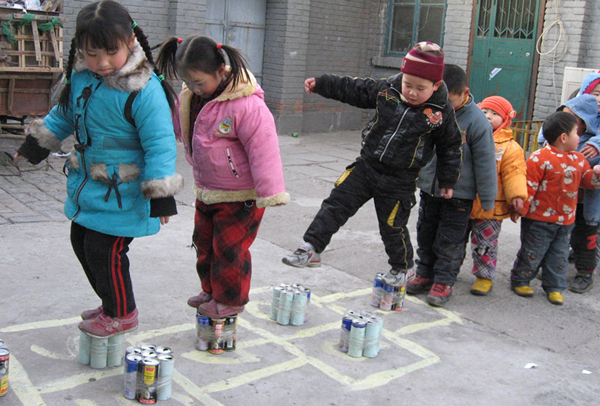
Figure 3: A new game walking on the top of piles with hopscotch created by children
Please look at this picture (Figure 4). This is a picture of the Sihuan Play Group, our big family. This is a kind of house containing our office rooms, activity rooms, and a library. In this house, children play with toys, listen to teachers reading books, do gymnastic exercises, etc. Through our activities over the past ten years or so, we came to realize that all children are angels for us, that the group serves as a "children's home," a more comfortable place than any other kindergarten for those children living in Sihuan. There are children who had to move to another kindergarten due to the long distance from their home but eventually came back to our group, while some children always insist on staying longer in the afternoon because they want to play more.
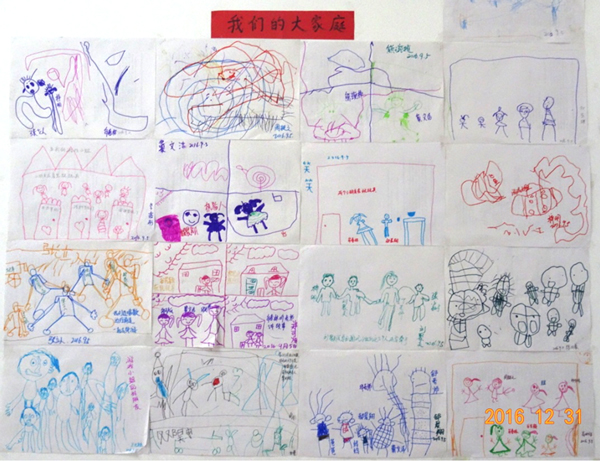
Figure 4: The Sihuan Play Group, our big family
The Sihuan Play Group is a private, grass-roots organization and has experienced various twists and turns over the years; and we enjoyed every moment with the group very much. Education is based on actions and cannot be realized without actions. This is easy to say but difficult to put into practice. However, true education will never be achieved without putting it into practice. Practice serves as the standard to verify theories. The most important thing is to avoid utilitarianism. Good education is a kind of persistent practice and the long-term accumulation of culture. In particular, good education should give children happy memories of their rich and enjoyable childhood.



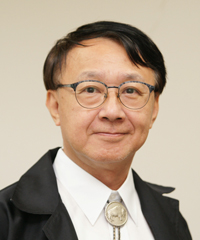 Shih-Tsung Chang
Shih-Tsung Chang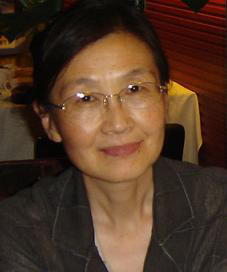 Yan Zhang
Yan Zhang










